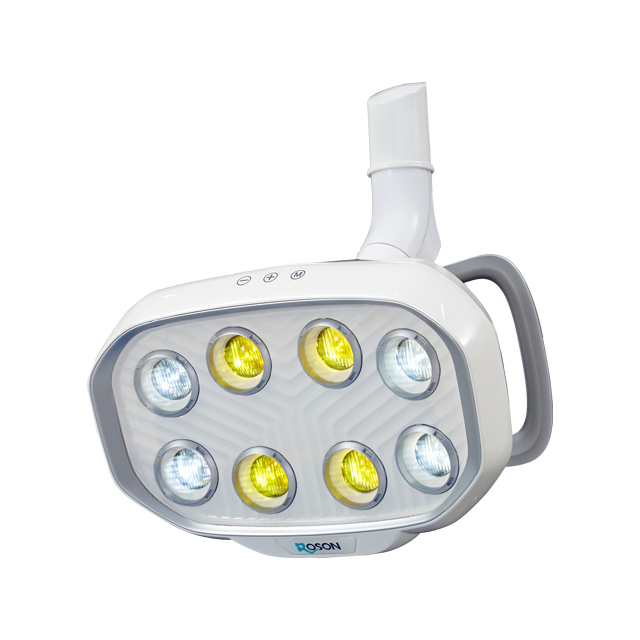Unlock the Secret to Choosing the Perfect Dental Light for Your Practice!
In the realm of dentistry, lighting is a pivotal element that is often overlooked. The right dental light not only enhances the visibility of the oral cavity but also significantly impacts patient comfort during procedures. Whether you’re performing a routine check-up or a complex surgery, adequate lighting can make the difference between a successful outcome and a challenging one. With a plethora of options available on the market—from overhead lights to portable solutions—making an informed choice is essential for any dental practice. This article aims to guide you through the various types of dental lights available, highlight key features to consider, and provide insights into evaluating performance and budget.

Understanding Dental Light Types
Dental lights come in various types, each designed to cater to specific needs within a dental practice. Overhead lights are the most common; they are typically mounted on the ceiling and can be adjusted to focus on the patient’s mouth from different angles. These lights often provide broad illumination, which is crucial for comprehensive examinations and procedures. Another popular option is intraoral lights, which are smaller and designed to be used inside the patient’s mouth. These lights offer targeted illumination, making them ideal for intricate procedures where precision is key. Lastly, portable dental lights are gaining traction for their versatility and ease of use. They can be moved around the practice, making them perfect for mobile dentistry or in situations where an overhead light might not suffice.
Each type has its advantages and disadvantages. Overhead lights, for instance, can provide excellent overall illumination but may be cumbersome in smaller treatment rooms. Intraoral lights, while effective, can be more costly and require careful handling. Portable lights are convenient, but they may lack the power of fixed lighting systems. Therefore, understanding these options is crucial for making an informed decision that best suits your practice's needs.
Key Features to Consider When Choosing a Dental Light
When selecting a dental light, several key features should be taken into account to ensure optimal performance. Brightness is paramount; a light that is too dim can hinder visibility, while one that is excessively bright can cause discomfort for both the dentist and patient. Look for lights that offer adjustable brightness settings to find the perfect balance. Color temperature is another important factor, as different temperatures can affect how colors appear. A light that mimics natural daylight can help in accurately assessing oral tissues and identifying potential issues.
Adjustability is crucial as well; a good dental light should be easy to position and manipulate, allowing for precise illumination of the treatment area. Energy efficiency is becoming increasingly important as well, not only for cost savings but also for sustainability efforts in your practice. Ultimately, these features can significantly impact the quality of dental work and patient comfort, making it essential to choose wisely.
Evaluating Performance and Ergonomics
The performance and ergonomic design of dental lights play a vital role in the overall efficiency of a dental practice. Ergonomics ensures that both the dentist and the patient are comfortable during procedures. A well-designed light should be easy to maneuver, reducing strain on the dentist's neck and back during long procedures. Furthermore, the positioning of the light should allow for unobstructed access to the oral cavity, facilitating a smoother workflow.
Performance is equally important; a light that provides consistent, shadow-free illumination can help the dentist see details better, leading to improved outcomes. It’s worth considering lights that incorporate advanced technology, such as LED options that not only provide superior illumination but also have a longer lifespan and reduced heat emission. Investing in ergonomic and high-performance dental lights can enhance the productivity of your practice and improve patient satisfaction.
Budgeting for Dental Lights
Budgeting for dental lights is a critical aspect of outfitting your practice. While it may be tempting to opt for the cheapest option available, it’s essential to strike a balance between cost and quality. Investing in a high-quality dental light can result in better patient outcomes and greater efficiency in your practice. To stay within budget, consider purchasing lights that offer a good warranty or maintenance package, as these can save costs in the long run.
Additionally, take the time to research and compare different options. Often, practices can find discounts or promotions that make higher-end lights more affordable. Speaking with colleagues or friends in the dental field can also provide insights into which products deliver the best value. Ultimately, a well-planned budget for dental lights will pay dividends in both the quality of care provided and the overall efficiency of your dental practice.
Making Informed Choices in Dental Lighting
Choosing the right dental light is a crucial decision for any dental practice. The right lighting not only enhances the quality of care but also ensures patient comfort during procedures. By understanding the different types of dental lights available, considering key features like brightness and ergonomics, and carefully budgeting for your investment, you can make an informed choice that will benefit both your practice and your patients. As you evaluate your needs, remember that the right dental light is an investment in the future of your practice, paving the way for improved outcomes and patient satisfaction.








